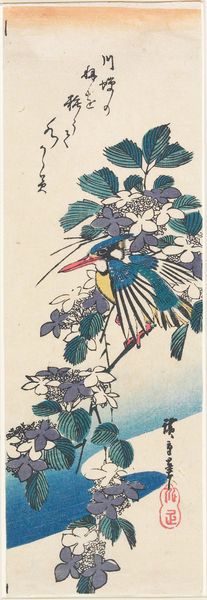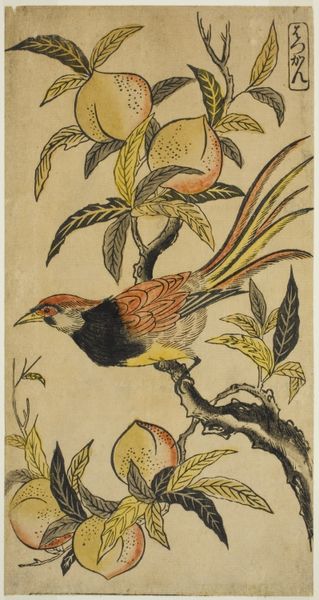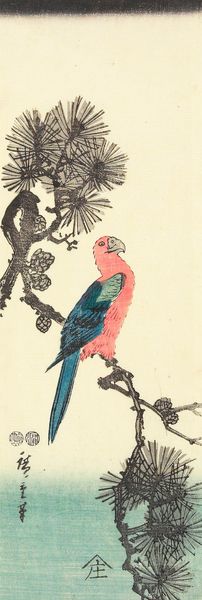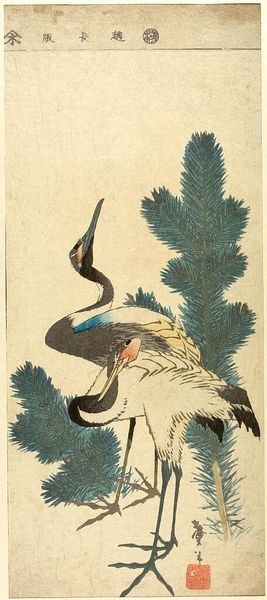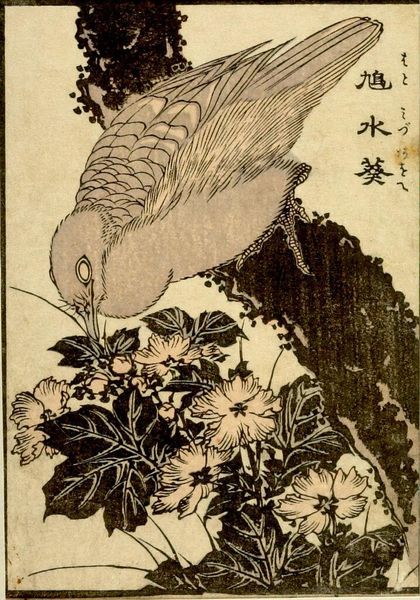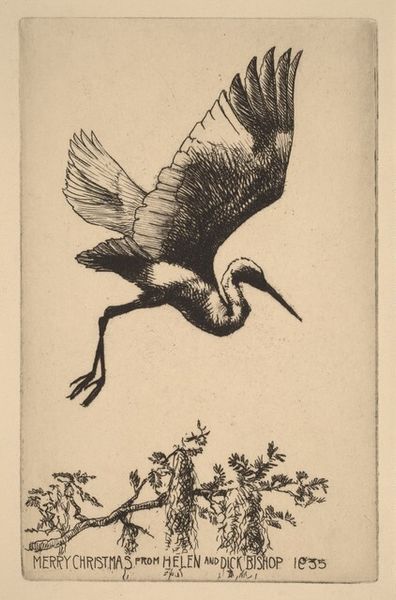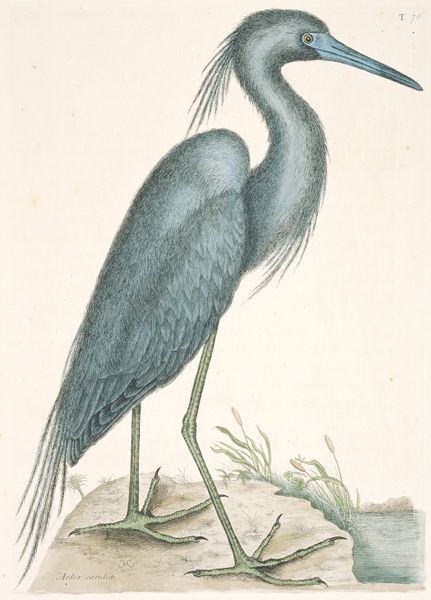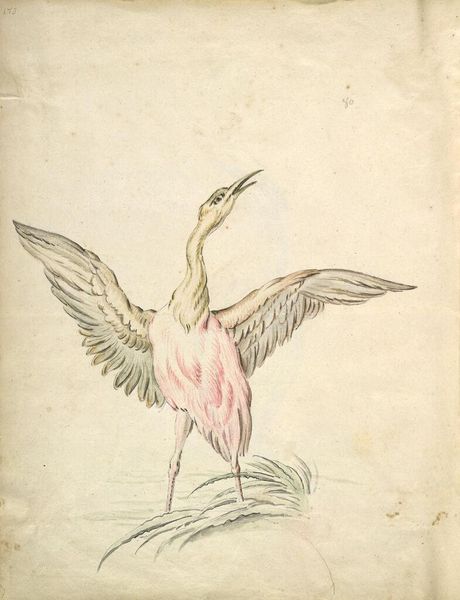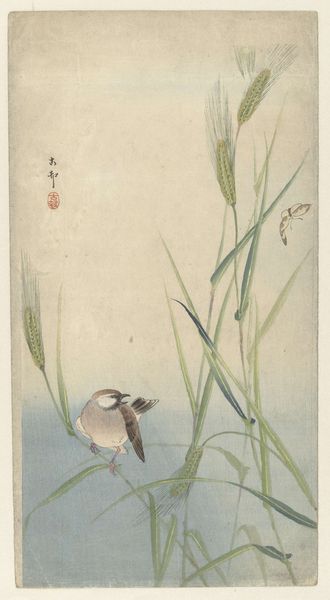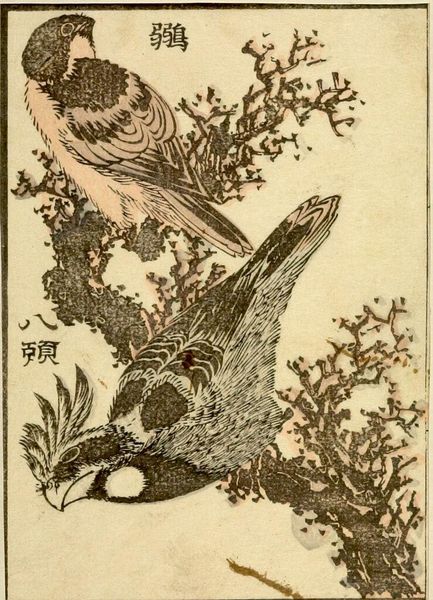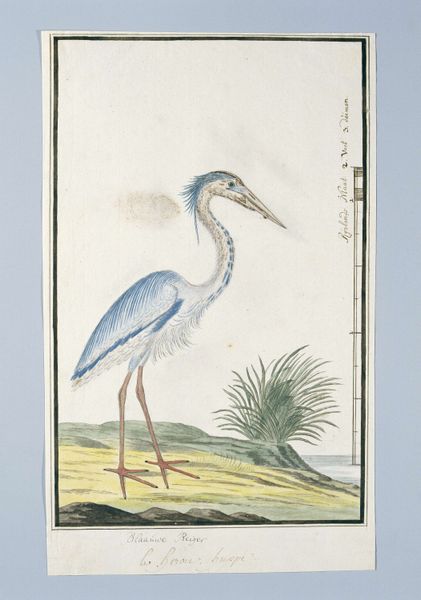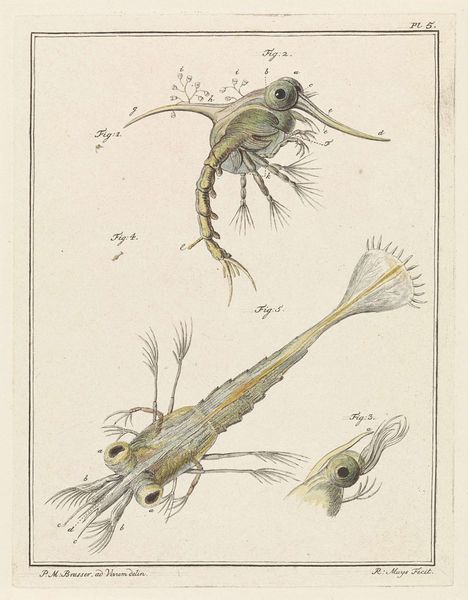
print, paper, ink, woodblock-print
# print
#
landscape
#
bird
#
ukiyo-e
#
japan
#
paper
#
ink
#
coloured pencil
#
woodblock-print
#
watercolor
Dimensions: 13 1/4 × 4 3/8 in. (33.6 × 11.1 cm) (image, aitanzaku)
Copyright: Public Domain
Curator: It strikes me as both serene and slightly unsettling. There's a stark verticality and the coloring is quite muted apart from the bursts of blue and red, which is odd in combination. Editor: We are looking at Utagawa Hiroshige's "Pampas Grass," created in the 1830s. It’s a woodblock print, using ink and color on paper, now held at the Minneapolis Institute of Art. It captures, in a very economic style, a snapshot of nature. What elements do you think contribute to the feeling you described? Curator: Well, the crane, dominating the composition, carries profound symbolism. It often represents longevity, fidelity, and good fortune in Japanese culture, which is fairly obvious here, but also serves to signal how connected art is to life; its likeness in printed artworks assures continued well-being. Yet, here, it seems a bit isolated, almost melancholic against the faded backdrop, which goes against the visual grain of Japanese artworks. Editor: I see your point about the cultural importance. Thinking about the materiality of this work – it's a woodblock print – emphasizes that these images weren’t singular creations. The process of carving the woodblocks, the layering of inks, allowed for a replication that made art more accessible. It speaks to a burgeoning middle class who sought aesthetic appreciation and an increasing popular art market. It reveals social hierarchies in 1830s Japan. Curator: Exactly! And the pampas grass itself – chosen for its ubiquity perhaps but certainly resonant of autumn and transience, enhances the feeling of poignant beauty. This wasn't just about accurately depicting nature. Hiroshige tapped into deeply rooted emotions, even psychological spaces linked to mortality and endurance, communicated across time. It’s beautiful and fleeting. Editor: Right. I'd add, looking closely, the choice of paper too matters. The absorbency affects the final wash of color, impacting the longevity of these works. These details point to how materiality serves a work’s narrative and cultural lifespan; everything ages together. Curator: Indeed, a collaboration across materials, motifs, and time, all carefully weighted. It makes us see the everyday differently. Editor: Absolutely. Seeing Hiroshige's print makes me wonder what this slice of Japanese life communicates across time—a fusion of artistic expression, skilled labor, and an unfolding historical story made durable by skillful making.
Comments
No comments
Be the first to comment and join the conversation on the ultimate creative platform.

